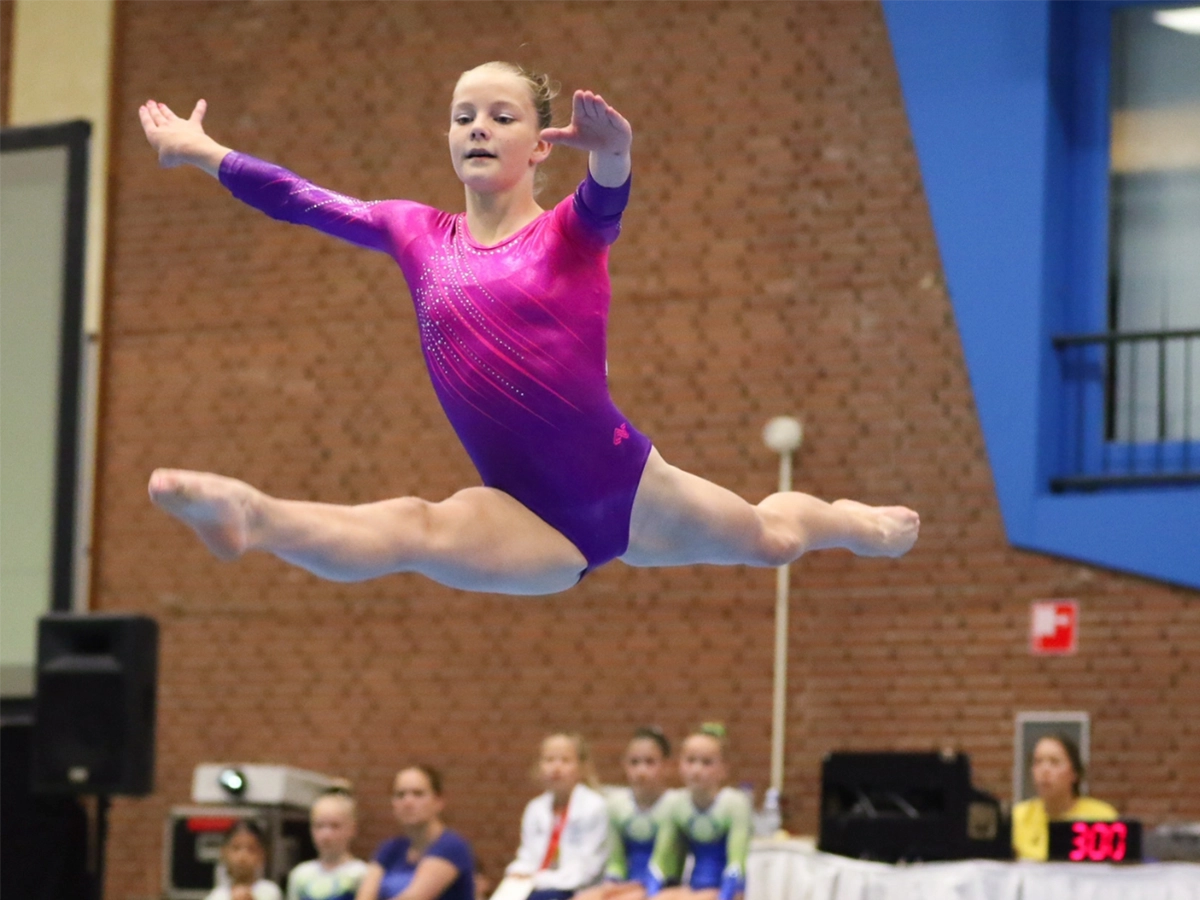Being involved in physical activities of all kinds has an amazing effect on toddlers. But gymnastics in particular has specific benefits that parents want to make sure their toddlers are developing.
To explain more about these specific benefits, it’s important to understand the senses that we are “born” with and ones that need to be developed.
Our senses are (as defined by Dr.William K. Pediaopolis in his paper entitled The Five Senses):
“A system that consists of a group of sensory cell types that responds to a specific physical phenomenon, and that corresponds to a particular group of regions within the brain where the signals are received and interpreted.”
That’s a bit heady so let’s bring that definition back to earth by saying that senses are the psychological capacities that we have as organisms to gather data for our perception The five senses that are common knowledge to us: sight, sound, smell, taste, and touch. The nervous system has a specific sensory system or organ, dedicated to each of these senses.
We actually have the ability to detect several stimuli beyond these five well-known senses: including the ability to detect temperature, kinesthetic sense, pain, balance, and various internal stimuli. Some experts calls these senses as well. But exactly what constitutes a “sense” is up for debate and that adds a little confusion to what some officially deem as senses.
Animals also have “senses”, with the strength of those senses varying between species. Even various animal types have differences in how strong a particular sense is among their specific breeds. For example, some breeds of dogs have a stronger sense of smell than others.
Animals can also sense things that humans cannot, such as the ability to sense electrical and magnetic fields and detect water pressure and currents.
There is a child development expert, Gill Connell, who explains how humans actually have seven senses and not simply the five common ones noted above in a book he co-authored, A Moving Child is a Learning Child.
The two additional senses defined by Connell are the sense of balance – also called a vestibular sense – and an intuitive sense of space and position – also called proprioception. Connell is one who feels that these abilities are automatic to adults. They, however, they may not be automatic to kids.
Where can kids develop this best? Where could they possibly explore the ability to crawl, climb, jump, hop, roll, balance, flip, and swing safely?
Gymnastics provides the perfect environment where toddlers can use their senses to develop coordination and confidence. Since the gymnastics environment is colorful, padded, fun – and safe – it’s the perfect one for supporting toddlers’ developmental progress.
In promoting your toddler gymnastics classes, be sure to share with parents these areas where participating in gymnastics benefits the developmental progress of toddlers:
- Vestibular – sense of balance
- Proprioception – understanding space and position
- Social Skills – taking turns, sharing, peer interaction
- Classroom Skills – listening, following directions, staying with class
- Active Play – establishing exercise is fun
- Confidence – learning new skills, encouragement
- Courage – overcoming fears, trying hard things
- Strength – use/development of muscles
- Flexibility – stretching
- Foundation – preparation for future activities
Providing a basis for solid development of very important “senses” and skills is an amazing bonus to learning to do the physically demanding and challenging movements on beams, bars, mats, horses and rings.
 hbspt.cta.load(3803665, ‘601ba65a-ddb7-4999-935f-ca80e374026e’, {});
hbspt.cta.load(3803665, ‘601ba65a-ddb7-4999-935f-ca80e374026e’, {});
Resources: Moving Smart blog, “The Five Senses” by Dr.William K. Pediaopolis in association with the University of Delaware, “Allegory of the Five Senses”, The Walters Art Museum














